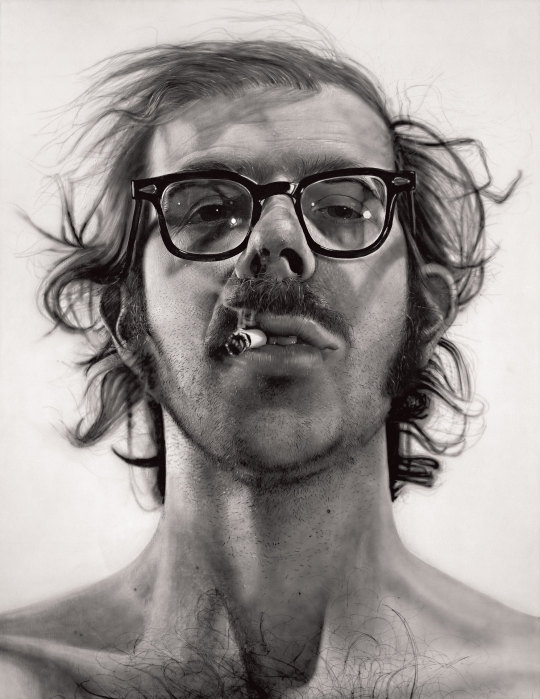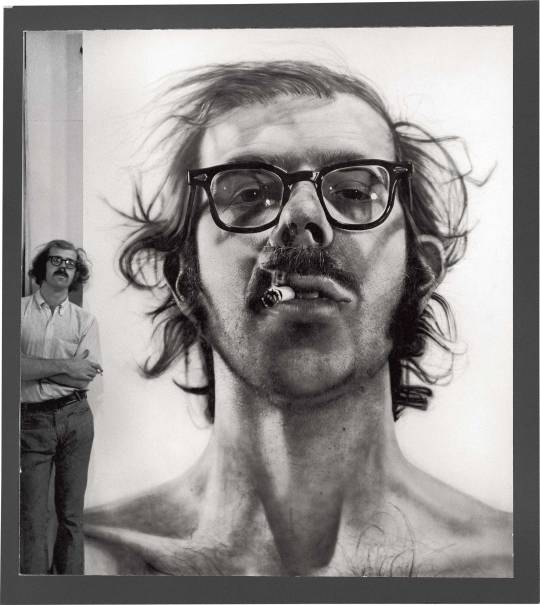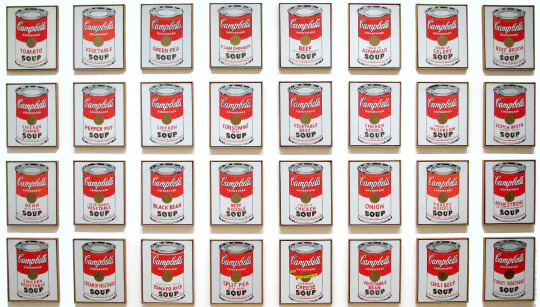Don't wanna be here? Send us removal request.
Text
Works Cited
“Leandro Erlich.” Leandro Erlich. N.p., n.d. Web. 5 May 2016. .
“Jeff Koons Artwork: Balloon Dog.” Jeff Koons. N.p., n.d. Web. 4 May 2016. .
“Lehmann Maupin.” Lehmann Maupin. N.p., n.d. Web. 28 Apr. 2016. .
“Jean-Michel Basquiat.” The Art History. The Art Story Foundation, n.d. Web. 28 Apr. 2016. .
“Crack Is Wack, 1986.” Crack Is Wack. N.p., n.d. Web. 5 May 2016. .
“Chuck Close | Work.” Chuck Close | Work. N.p., n.d. Web. 2 May 2016. .
“Louis K. Meisel Gallery.” “Madison Square” Richard Estes -. N.p., n.d. Web. 23 Apr. 2016. .
“Dan Flavin Biography, Art, and Analysis of Works.” The Art Story. N.p., n.d. Web. 27 Apr. 2016. .
“Minimalism Movement, Artists and Major Works.” The Art Story. N.p., n.d. Web. 23 Apr. 2016. .
“American Art: History of Fine Arts in America.” American Art: History of Fine Arts in America. N.p., n.d. Web. 7 Feb. 2016. .
“Georgia O'Keeffe Biography, Art, and Analysis of Works.” The Art Story. N.p., n.d. Web. 6 Apr. 2016. .
1 note
·
View note
Photo



Leandro Elrich (b. 1973)
Swimming Pool
1999
3 notes
·
View notes
Photo

Jeff Koons (b. 1955)
Balloon Dog
1994-2000
Mirror-Polished Stainless Steel with Transparent Color
He turned banality into fine art. From Warhol he borrowed the idea that, in a godless world saturated by media, art itself was just another commodity, albeit one with extraordinary added value. And while Warhol made silk screen prints in his “factory”, Koons took the industrial metaphor much further, employing dozens of skilled artisans to manufacture works such as the balloon dogs without any hands-on input from the artist himself.
#jeff koons#balloon dog#blue#mirror-polished stainless steel with transparent color#1994 - 2004#Genius 30
0 notes
Photo

Ashley Bickerton (b. 1959)
White Head II
2012
Oil Acrylic Coral and Found Objects on Digital Print on Plywood
#Ashley Bickerton#White Head II#2012#Oil Acrylic Coral and Found Objects on Digital Print on Plywood#Neo-Pop Art#Genius 30
0 notes
Text
Neo-Pop Art (1980s- present)
The terms "Neo-Pop" or "Post-Pop" denote the resurgence of interest in the themes and methods of the 1950s and 1960s Pop-Art movement
0 notes
Photo

Jean-Michel Basquiat (1960 - 1988)
Flexible
1982
Acrylic and Oil Paint Stick on Wood
Flexible features two of Basquiat's most famous motifs: the griot and the venerable crown. A sole black figure, half cadaver, half living entity, stares "blindly" at the viewer, its arms creating a closed circuit, perhaps a reference to spiritualized energy. With few distinguishing characteristics, the subject takes on the visage of the Everyman. At the same time, this is not just any figure, but one of African ethnicity and proud heritage a clear reference to Basquiat's own identity (note the diagrammatic rendering of the figure's lungs and abdomen, reminiscent of the young Basquiat's fascination for Gray's Anatomysketches). Given that the griot is traditionally a kind of wandering philosopher, street performer, and social commentator all in one, it is probable that Basquiat saw himself in this role within the New York art world, one that nurtured his artistic success but also swiftly exploited it for material profit.
13 notes
·
View notes
Photo


Keith Haring (1958 - 1990)
Crack is Wack
1986
Mural
This mural on a handball court at 128th Street and 2nd Avenue was inspired by the crack epidemic and its effect on New York City. It was created as a warning and was initially executed independently, without city permission. The mural was immediately put under the protection and jurisdiction of the City Department of Parks and still exists.
85 notes
·
View notes
Text
Graffiti Art (1970s - 1980s)
Also called "Writing", "Spraycan Art" and "Aerosol Art", Graffiti Art is closely linked to the cultural movement hip-hop, which sprang up in various American cities, in the early 1970s, notably in the New York subway. By the mid-1970s most of the creative standards in Aerosol Art had already been established, and the genre began to stagnate. By the early 1980s, a group of avant-garde 20th century painters known as the United Graffiti Artists (UGA), founded in 1972 by Hugo Martinez, had expanded its membership to include many of the leading graffiti taggers and sprayers, with a view to showing works in official venues, like the Razor Gallery. Thereafter, during the late 1980s and 1990s, well known graffiti artists began renting studios and showing their works in galleries and renting art studios
1 note
·
View note
Photo


Chuck Close (b. 1940)
Big Self-Portrait
1967
Acrylic on Canvas
“I am not trying to make facsimiles of photographs. Neither am I interested in the icon of the head as a total image. I don’t want the viewer to see the whole head at once and assume that that’s the most important aspect of my painting. I am not making Pop personality posters like the ones they sell in the Village. That’s why I choose to do portraits of my friends–individuals that most people will not recognize. I don’t want the viewer to recognize the head of Castro and think he has understood my work.”
1 note
·
View note
Photo

Richard Estes (b. 1932)
Madison Square
1994
Oil on Linen
True to photographs taken by Estes.
4 notes
·
View notes
Text
Photorealism, Superrealism (1960s, 1970s)
These terms describe a style of hyperrealistic painting which appeared in the late 1960s, in which subjects are depicted in a highly detailed manner, just like a photograph. Often used to demonstrate technical virtuosity
0 notes
Photo


Dan Flavin (1933 - 1996)
"Monument" I for V. Tatlin
1964
Cool White Fluorescent Lights
This "monument" dedicated to Tatlin is a distant rendition of Tatlin's Monument to the Third International. It is one of 39 so-called monuments to the Russian Constructivist artist, Vladimir Tatlin, who Flavin held in extremely high regard. Meant to be an office building built according to the ideals of Constructivism, Tatlin's Third International was never constructed, although the plans for the monument remain a symbol of the movement. Flavin's Monuments, made up of light bulbs that either burn out or are turned off, have an element of impermanence that memorializes the ghost of Tatlin's unrealized project. As Flavin stated, "The pseudo-monuments, structural designs for clear but temporary cool white fluorescent lights, were to honor the artist ironically.”
0 notes
Photo

Frank Stella (b. 1936)
Die Fahne Hoche!
1959
Enamel on Canvas
It is a monochrome rectangular painting on a heavy chassis projecting from the wall into surrounding space as if urging the viewer to move back. Magnetized, the viewer is drawn closer seeking to read the pattern of pinstripes on the surface. These stripes are in fact the raw canvas revealed between broad black stripes painted with few visible brushstrokes. The painting is an unframed, flat abstraction and would appear to be meaningless except for its title: Die Fahne Hoch! (Raise High the Flag!), the opening words of the Nazi anthem. Stella has denied any political connection, and one could possibly see the title as a wave to Jasper Johns, whose American flag paintings of 1954-55 were met with praise by his critics, but also a general public bewilderment.
1 note
·
View note
Text
Minimalism (c. 1960s)
Minimal Art is a purist form of abstract art which become an influential style around the world in sculpture, painting and architecture. Minimalist works (of sculpture and painting) typically consist of bare uniform elements making up some type of a grid or pattern.
1 note
·
View note
Photo

Andy Warhol (1928-1987)
Campbell’s Soup Cans
1962
Synthetic Polymer Paint on Thirty Two Canvases
"I don't think art should be only for the select few," Warhol believed, "I think it should be for the mass of the American people." In Campbell's Soup Cans he reproduced an object of mass consumption in the most literal sense. When he first exhibited these canvases—there are thirty-two of them, the number of soup varieties Campbell's then sold—each one simultaneously hung from the wall, like a painting, and stood on a shelf, like groceries in a store.
Repeating the same image at the same scale, the canvases stress the uniformity and ubiquity of the Campbell's can. At the same time, they subvert the idea of painting as a medium of invention and originality.
1 note
·
View note